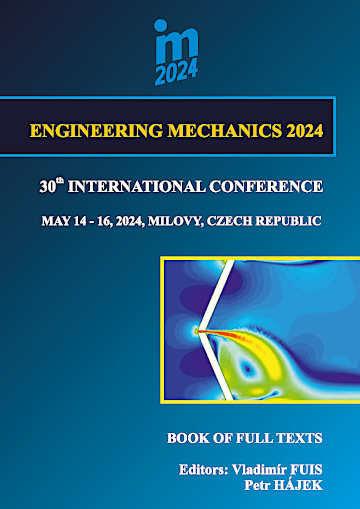Proceedings Vol. 30 (2024)

ENGINEERING MECHANICS 2024
May 14 – 16, 2024, Milovy, Czech Republic
Copyright © 2024 Brno University of Technology, Institute of Solid Mechanics, Mechatronics and Biomechanics, Brno
ISSN 1805-8248 (printed)
ISSN 1805-8256 (electronic)
list of papers scientific commitee
pages 290 - 293, full text
Granular matter formed from non-spherical solids appears in both natural and industrial settings. These include, among others, landslides, mixing, and fluidization. The commonly used predictive method for granular matter is the discrete element method (DEM). However, DEM was initially designed for spherical particles and faces many challenges in modeling the non-spherical ones , which are prevalent. Therefore, various approaches, including multi-sphere clusters, super-quadrics and polyhedral models, were developed to approximate the irregular shapes. The polyhedral approach offers the highest level of fidelity, but comes with the biggest computational costs, particularly for non-convex particles. Hence, optimization and parallelization of codes with polyhedron-based DEM solvers are of great interest. In this work, we present recent advances in the development of our custom polyhedron-based DEM solver, focusing on parallel computing. With improvements in the solver architecture and boosted computational efficiency, the DEM code scales well at least up to 32 cores and allows for efficient coupling with computational fluid dynamics (CFD) to simulate complex particle-laden flows.
back to list of papers
Text and facts may be copied and used freely, but credit should be given to these Proceedings.
All papers were reviewed by members of the scientific committee.

 Powered by
Imce 3.20 © 2023, Pavel Formánek, Institute of Thermomechanics AS CR, v.v.i. [generated: 0.0116s]
Powered by
Imce 3.20 © 2023, Pavel Formánek, Institute of Thermomechanics AS CR, v.v.i. [generated: 0.0116s]